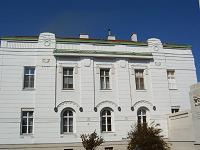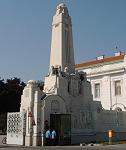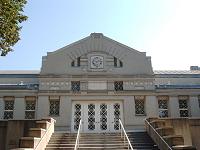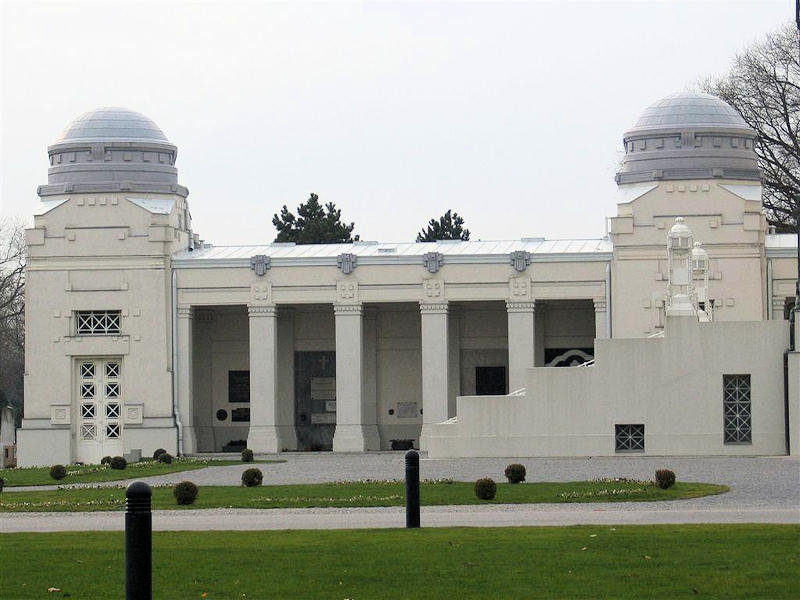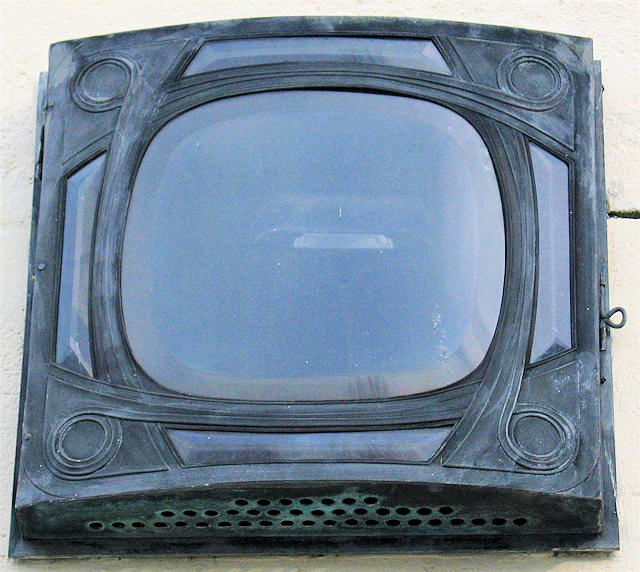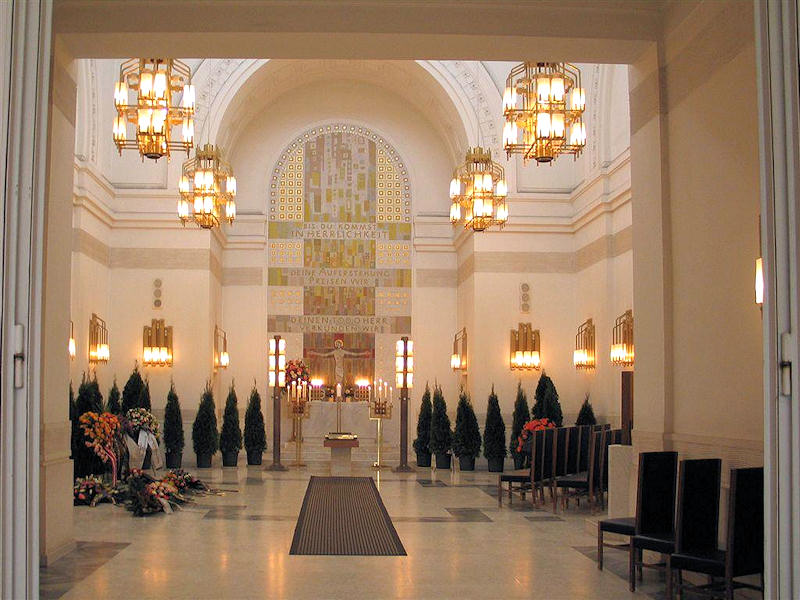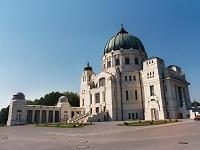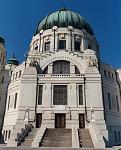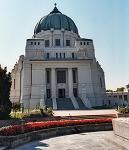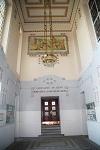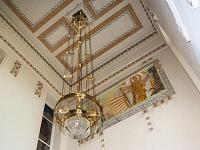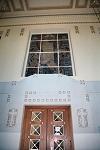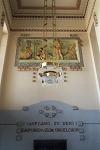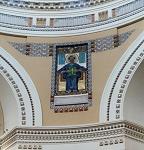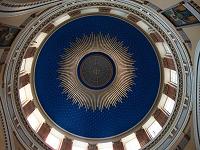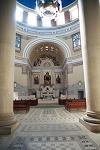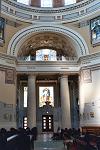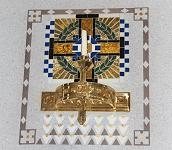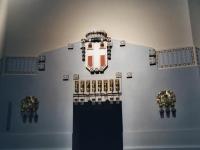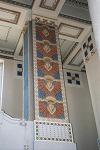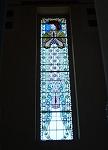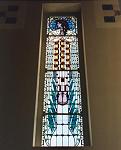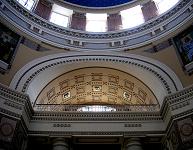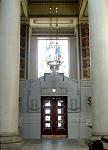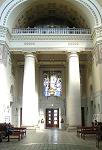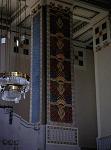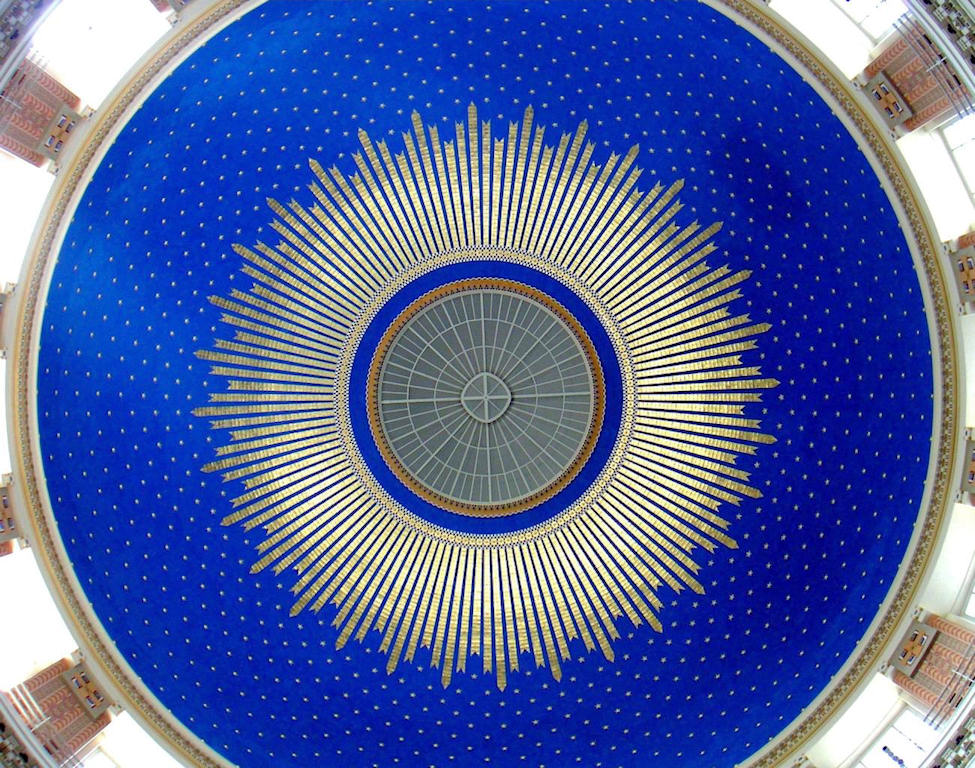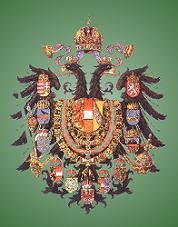The Belle Epoque in Europe
Austria
Vienna: Central Cemetery and Church of Saint Charles Borromew
Architect: Max Hegele
In 1863, the municipal council of Vienna decided to establish a central cemetery for all religions; therefore, in 1869, the territory was bought in Simmering. In the next year 1870, the council publically invited tenders for the arrangement of the cemetery which was won by the horticulture architects Karl Jonas Mylius and Alfred Friedrich Bluntschli from Frankfurt/Main. They started the work in 1873, and on November 1st, 1874 the first parts of the Vienna Central cemetery were ready to be used.
The architects Mylius and Bluntschli had already planned to build a church, but in 1899 only, the tenders had been invited. The winner was the only 27-year-old architect Max Hegele, a student of Otto Wagner. Hegele's draft showed each essential cemetery building, amongst them the pylon gate (1905) with the two mortuaries on each side and the church with the vaults surrounding it. But it took a while, however, until the construction of the church could finally start. The solemn laying of the foundation stone took place on May 11, 1908; then, however, it took only three years before the building could be consecrated and inaugurated on June 14, 1911.
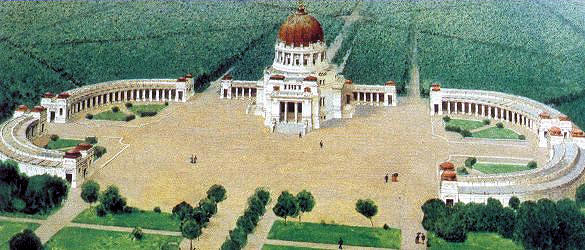 Church of Saint Charles Borromew (1908-1911)
Church of Saint Charles Borromew (1908-1911)
The plan is designed according to the shape of a greek cross dominated by the central dome of a height of about 40 metres. The four short cross branches are covered by semicircular vaults with box tiles above of which are galleries, supported by enormous columns, to the north, the west and the east. The fourth vault, opposite to the main entrance, is the altar niche.
The interior is a high, bright, nearly cheerful room; through the windows and mosaics created by Leopold Forstner enters an extraordinary light. Forstner has also created the beautiful mosaics of the four evangelists. On the inner walls, you find a lot of template painting, a technique where there is a template for each colour. Particularly beautiful are the brass lamps with glass sticks and the twelve magnificent candlesticks also made of brass which light is reflected by the apostle cross mosaics from the studio of Ignaz Dürr. But the most beautiful part of the building is for sure the central dome, a work originally created by Ignaz Dürr as well. It consists of about 21,000 mosaic pieces forming a golden radial circle surrounded by exactly 999 stars on a blue ground. Besides Otto Wagner's Steinhof church, the Church of Saint Charles Borromew is the most important sacred Jugendstil building in Vienna and one of the most beautiful in the whole world.
Unfortunately, according to the construction technique of its time, the church had important static defects and was set upon bad subsoil; therefore, in the course
of the years, it was heavily damaged, also caused by water entering the subsoil. The effects inside were likewise disastrous: About 40 % of the floor tiles were broken,
the metall and brass objects were unrecognizably rusty and the paintings on the walls could not be seen or recognized anymore.
Between 1995 and 2000, the church has been redeveloped and renovated thoroughly by an expert team under the direction of the Vienna architect
Univ. Prof. Manfred Wehdorn. During a period of five years, twenty to fifty companies with up to 150 employees worked
on the construction site. On October 27, 2000, the magnificent church, the Jugendstil jewel by Max Hegele, could finally reopen and be used again.
